That’s What Films Are For, to Learn How to Live
A Few Thoughts on La maman et la putain by Jean Eustache
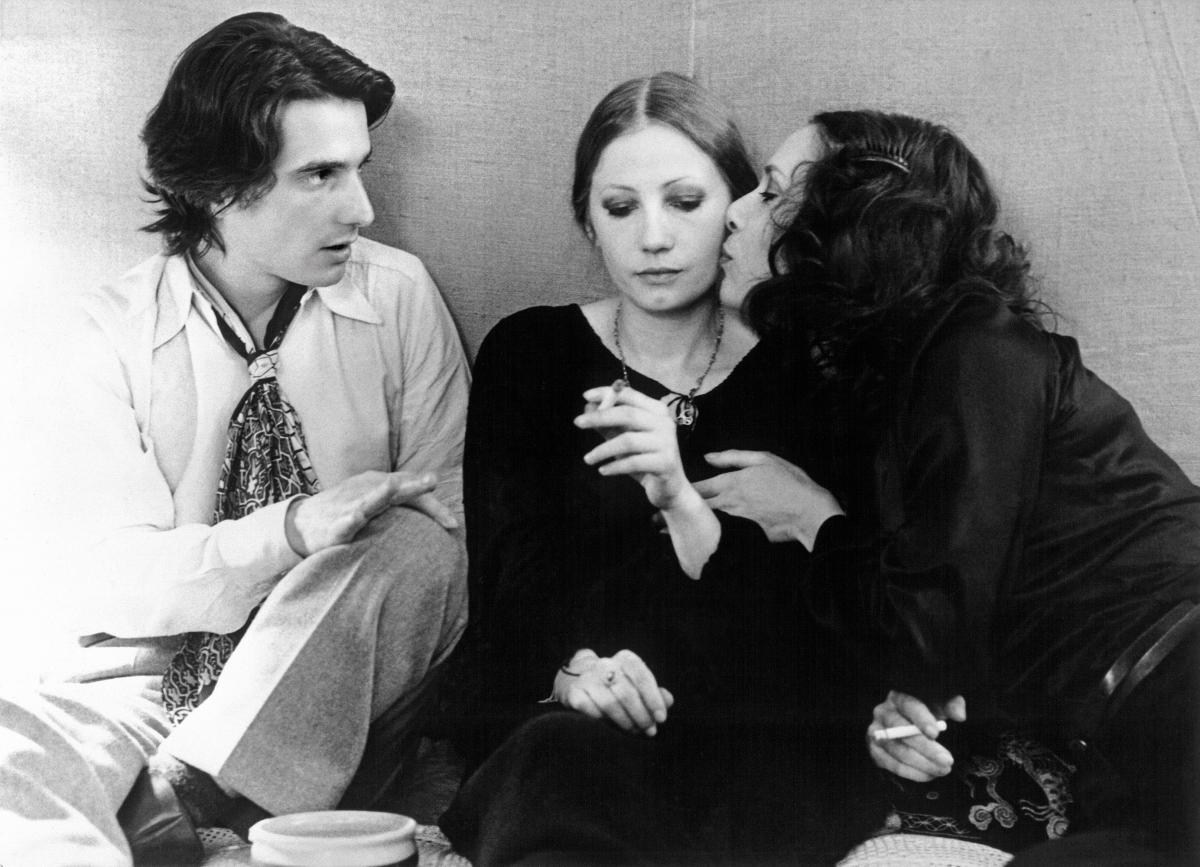
Séquence zéro
“Eustache was a kind of ‘provincial’ cousin to the Nouvelle Vague filmmakers: he was from the South and much younger than every other Nouvelle Vague filmmaker, who did not take him seriously. Suddenly, Eustache makes a film that every single director of the Nouvelle Vague had dreamed of making. He made the film Rivette, Godard, Rohmer and Truffaut would have died to make and every single one of them knew it – La maman et la putain, of course. It’s the ultimate Nouvelle Vague film, except that it doesn’t come from a Nouvelle Vague filmmaker.”1 – Olivier Assayas
Jean Eustache (1938-1981) made twelve films between 1963 and 1980, fictions and documentaries. They are mostly short films, or moyens-métrages [medium-length films], and he only made two feature films. La maman et la putain won le (Grand) Prix spécial du jury, and le Prix de la Semaine (Internationale) de la Critique, ex aequo with Marco Ferreri’s La grande bouffe, at the 1973 Cannes Film Festival. At its initial screening, it was booed by some of the audience and labelled “merdique” [crap] by the press, a word frequently used by Véronika, one of the principle characters.2 The film was a minor scandal and a relative success, the only success the filmmaker would have.3
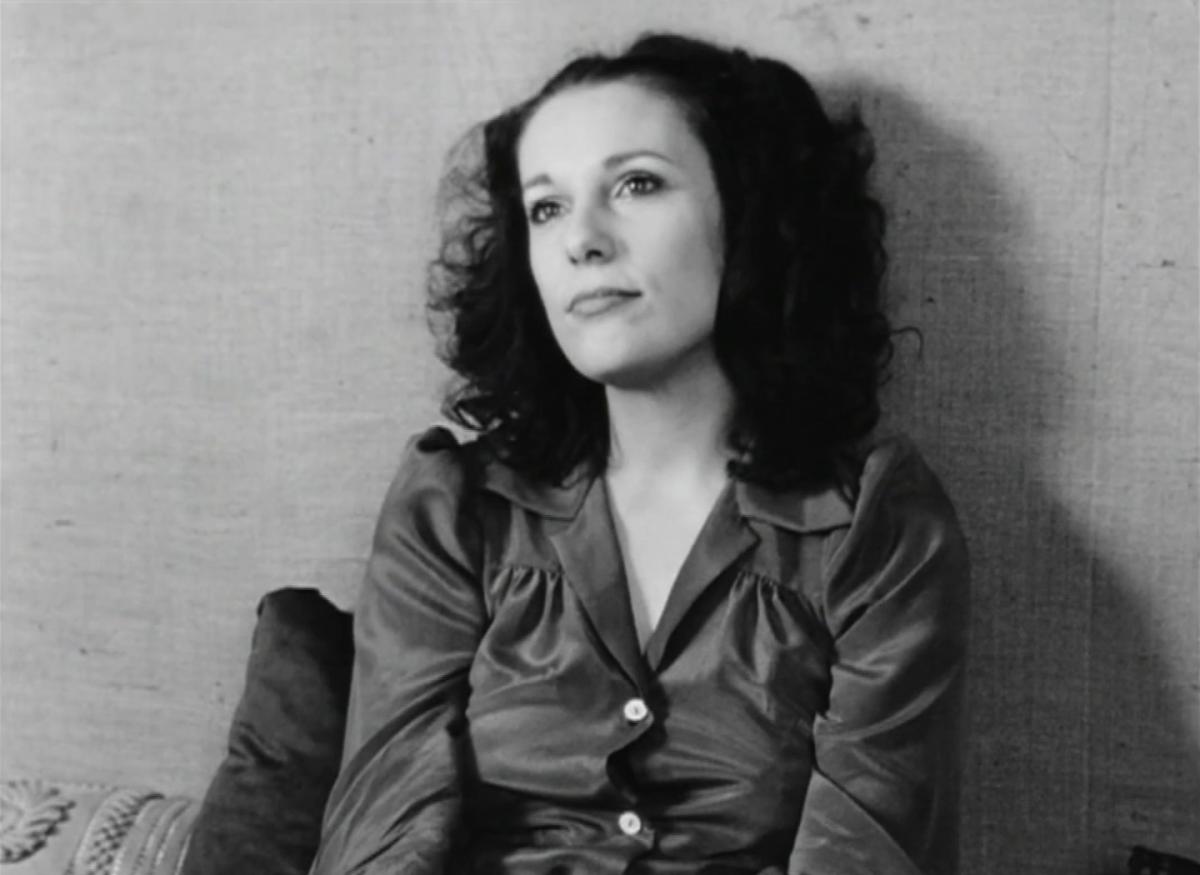
1.
“La maman et la putain was a film loaded with a priori decisions, especially the length of the film.”4 – Jean Eustache
The film is unique in all its aspects, an exceptional tour de force. During three hours and forty minutes, in thirty-two séquences, Eustache explores a love triangle written in a lyrical and sophisticated literary language. La maman is a film about la parole without any action. Eustache’s brutally honest dissection of post-May ’68 fatigue, when the promises of ’68 turned out to be shattered illusions – failed and meaningless – is also a critique of le couple libre, of the affective and sexual morals of sexual liberation. Love is not free and happy, concludes Eustache. Love is pain. Love is devastating, but it is perhaps also the only salvation. “Comes love, nothing can be done.”5 The confusion, the madness, and all the different emotions which belong to un discours amoureux are carefully explored.6
The text had to be heard as a text. Despite giving an impression of spontaneity, the characters’ words were in fact very carefully scripted, and there was no room for improvisation during the shooting. All the long monologues were read out by the actors who sometimes had a piece of paper in their lap or a board in front of them in order to make sure they were saying the exact words of the original script that was about three hundred pages long. During the shooting of the film, Eustache did not look at the actors, but listened to them while looking at his script. Eustache did not allow improvisation, although the film feels improvised.7
Eustache did not choose a hand-held camera, realism or naturalism, but a theatrical approach, a philosophy of the unnatural and the experience of real time. The film has the tempo of a flâneur, of non-action. There is no strong narrative development and it takes three hours of a meandering progression for the minimal sentimental plot to reach a climax.
The climax of the film is a long monologue by Véronika – creating a cathartic moment. In this scene the three central characters sit next to each other on the bed. Véronika, played by Françoise Lebrun, is filmed in a close up while she speaks at length. The image could be seen as a reference to Carl Theodor Dreyer’s The Passion of Joan of Arc (1928). After this climax, the character of Marie plays a record: Les amants de Paris by Edith Piaf. We watch and listen to the song in its entirety – experiencing real time. Marie and Alexandre play records, and twice we watch and listen to a whole song—a close-up of the record player, while characters and the audience listen. The film permits itself to take (its) time.
The very sophisticated and mechanical deliverance of the actors is disrupting – a style of acting comparable to Robert Bresson’s films. The continuous monologues test the endurance of the actors, as well as that of the viewers, causing transformation and tremblement (trembling) for both. Someone speaking at length is in the process of emptying himself or herself and can become blue in the face, while the listener can become drunk on all this talk, even forced to vomit. In the film, the characters are continually drinking. The film ends with Véronika throwing up, after excessively talking and drinking. Jack Daniels is, tellingly, credited as technical adviser on the film.
La maman is designed to capture intimacy. The literary text is delivered with absolute precision and with respect for every comma, while Eustache films Paris as a document, with a quiet camera, devoid of any hysteria, which slowly and calmly records the flow of language from the main characters. Refusing all virtuosity, the mise-en-scène seduces with its austerity, a reserved camera in contrast to the theatrical performances. Paris looks like a spectral city, captured with the minimalism of early cinema. It is not by chance that Eustache has Alexandre refer to Friedrich Wilhelm Murnau. His cinematic project is that of a return to early cinema.
Eustache prefers natural light, for interior scenes as well, with only a minimum of éclairage, with passages slightly under- or overexposed. Direct sound: we continually hear the ambient noise of the city in the background, the presence of Paris – birds, people murmuring in bars, cars and motors, coming and going off-screen – sometimes making Alexandre’s grandiloquence inaudible. The montage is minimal, with fades to black after each sequence. Not only is there no strong narrative development, the editing creates the impression of a series of disjointed events. “It took three months of editing to make this film seem unedited,” Pauline Kael wrote in The New Yorker.8 No soundtrack: the eight pieces of music are all either sung or played by the characters on a gramophone.
In 1971, Eustache named his documentary about his grandmother, Odette Robert, Numéro zéro, a reference to starting from scratch and tabula rasa. Eustache reinvented himself over and over. La maman is another film zéro. After a period when he was more or less influenced by the Nouvelle Vague, Eustache became inspired by the formal radicalism of Bresson, Carl T. Dreyer and Kenji Mizoguchi. To achieve uniformity and to record without (or with the least amount of) distortion, La maman was shot on 16mm black-and-white film, entirely with a single lens—the most neutral, a 25mm (which is the equivalent of a 50mm lens for 35mm film, the lens preferred by Bresson). It’s no coincidence that Pierre Lhomme did the cinematography for La maman. He had just made Quatre nuits d'un rêveur (1971) with Robert Bresson.
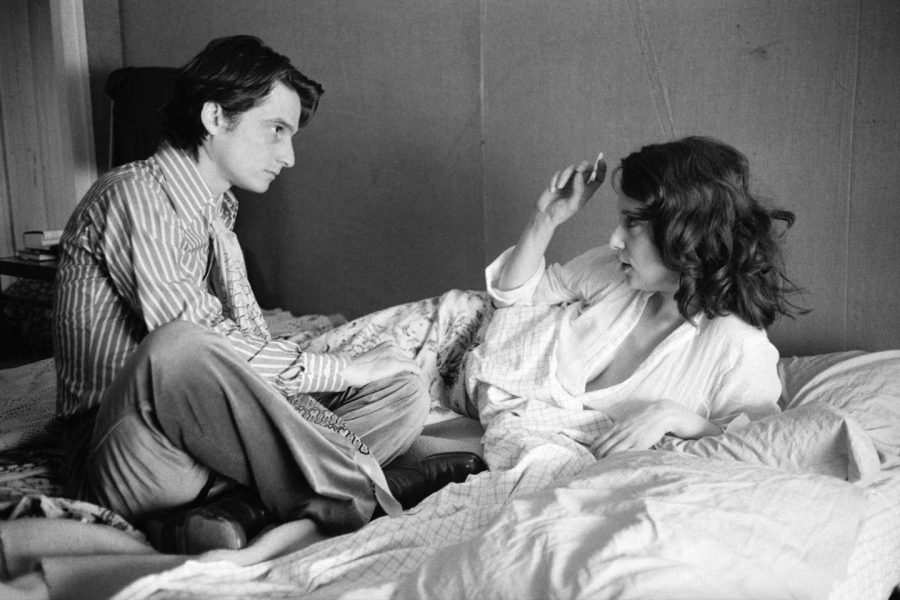
2.
The film is fundamentally autobiographical and made with imperious necessity. The French film critic Serge Daney wrote in Eustache’s obituary that he was “an ethnologist of his own reality”.9 In an interview, Eustache said, “I wrote this script because I loved a woman who had left me. I wanted her to act in a film I had written. [...] I wrote this film for her and Léaud; if they had refused to act in it, I wouldn’t have written it.”10 Eustache wrote the film specifically for Françoise Lebrun, the woman he had lived with, and Jean-Pierre Léaud, with whom he had made Le père Noël a les yeux bleus in 1967, and who was, beside Truffaut’s, also his cinema double.
“The film is admirable first and foremost because it confirms the generally accepted, but rarely verified, theory that a film has all the more chance of achieving the universal (the plural) when it starts from one (the singular, literally). In this case, the singular is a personal experience, a heartbreak story that urgently demanded to become a film.”11 This general theory mentioned by Alain Philippon in his 1986 monograph on Eustache without a doubt applies to all the arts. Diane Arbus formulated the same concept as follows: “Another thing is a photograph has to be specific. (…) It was my teacher, Lisette Model, who finally made it clear to me that the more specific you are, the more general it’ll be. You really have to face that thing. And there are certain evasions, certain nicenesses that I think you have to get out of.”12 Eustache did not care for evasions or “nicenesses” when it came to his art.
Artists whom we identify as working within this general theory are often, if not always, driven by imperative necessity. La maman et la putain, by being singular and specific through a personal love story, by being set in the present (of 1972) and by depicting the ideologies, morals, modes and tics of the times (with references to Jean-Paul Sartre, the Women’s Liberation Front, Jacques Duclos, the PCF, Mick Jagger, Deep Purple, etc.), and by creating a personal, inventive aesthetic (or form), is regarded as a portrait of a certain generation (in Paris). At the same time, the film still appeals on a universal level to diverse audiences, almost fifty years after it was made.
Eustache used real dialogue, events, even the actual people, and filmed the exact locations where the real events had occurred, but Lebrun does not play herself in the film. For Eustache, in respect of the experience of reality, the real had to be transformed. When Eustache was living with Cathérine Garnier (Marie in the film, played by Bernadette Lafont), while still trying to get back with or get over Françoise Lebrun (Gilberte in the film, played by Isabelle Weingarten), he met Marinka Matuszewski (Véronika in the film, played by Françoise Lebrun). The film tells this story of Alexandre/Eustache who, while living with Marie and trying to get over Gilberte, meets Véronika.
All three real women are in fact connected to the film: Lebrun as the leading actress, with Matuszewski appearing in one scene, and the film is dedicated to Cathérine Garnier, who was responsible for the art direction and costumes, and whose apartment and clothing shop were used as those of Marie.13 Marinka Matuszewski makes a cameo in the film. In a scene in a café, Alexandre mistakes her for Véronika. The two women dress in the same fashion and look like doubles of each other. In a pun that is characteristic of Eustache, and which for the audience remains incomprehensible, Alexandre mistakes the real-life Marinka for the fictional one.
Eustache portrays himself, with the character of Alexandre, as a maladjusted, narcissistic and pretentious dandy who often takes himself too seriously. But he also has moments of insight and while his ramblings can sometimes be ridiculous, he can also be very sensitive and poetic.
The film starts and ends with Alexandre proposing marriage – to Gilberte during the first scene (séquence zéro) and to Veronika in the final scene (dernière séquence). La maman has a refined sense of humour.
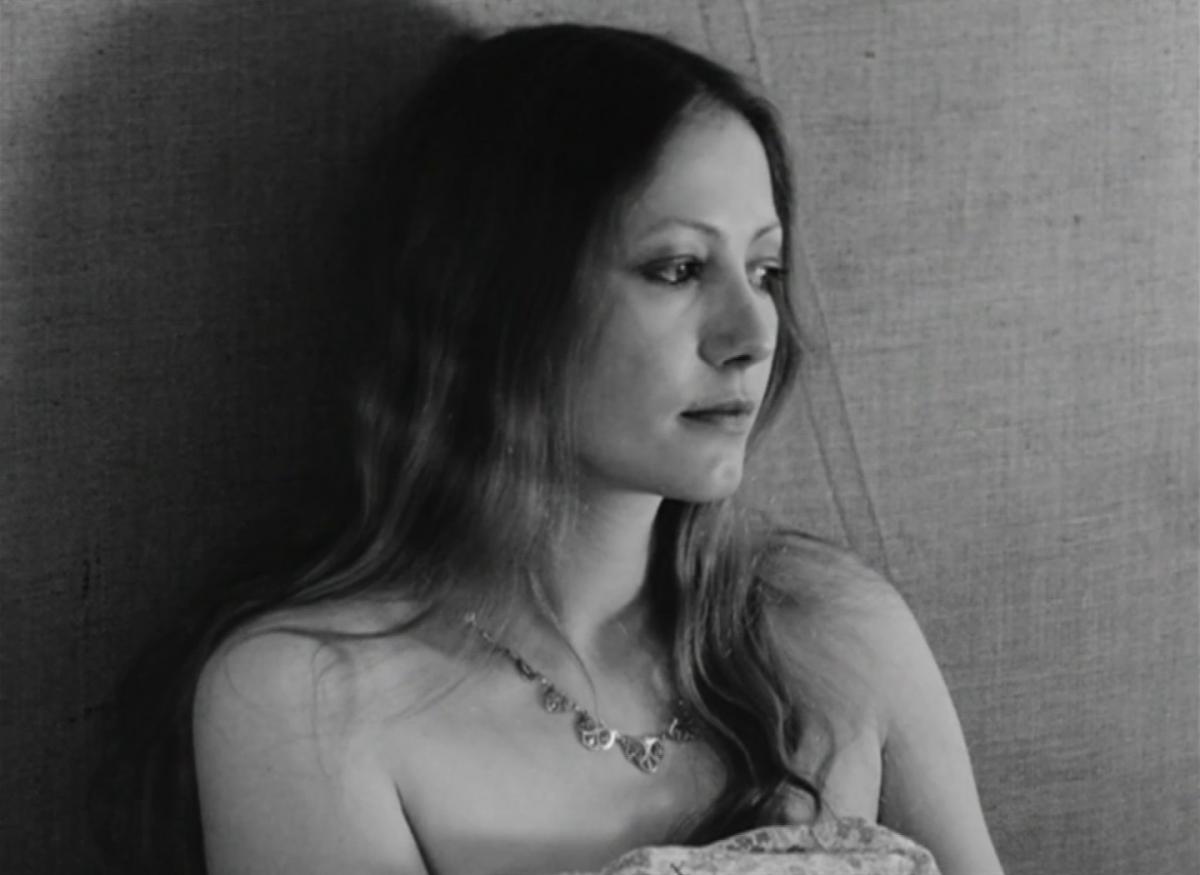
3.
“That must be what freedom is.” When Alexandre, in his singular, slightly strange elocution comes to this conclusion, it is five in the morning. Véronika and Alexandre are in bed. They have made love in Marie’s bed, again. It is their second night together while Marie is in London for a few days. Véronika talks about a past lover and the things he would do and say. Alexandre puts on a song by Frehel, La chanson des fortifs (1938). He is haunted by times long gone, and the songs he plays throughout the film reflect his nostalgic mood, his desire for a past era and his malaise with the times in which he finds himself living, with the contemporary.14 Alexandre hums and sings along joyfully. Véronika responds to his song by singing a song herself, entitled Tout simplement. She stops and says, “Vous me gênez,” one of the only unscripted moments in the film.15
Then Alexandre turns on the radio, for it is the time of le prédicateur du petit matin (the preacher of the small hours). The preacher has already started his monologue, and they listen attentively. Alexandre reveals that he often listens to him. He is fascinated by this voice that exists only as a voice for him, of which he has no image. The preacher always ends in the same way, which Alexandre knows by heart and repeats, imitating the preacher’s heavy foreign accent: “So, my friends, this is Dipar Apartian speaking and saying: goodbye and see you soon.”16 The preacher, it seems, is an Armenian by descent and speaks French with a very strange and heavy foreign accent.17 After this passage of borrowed, declaimed, recited, and sung words, Alexandre proposes to go to Le Mahieu, a bistrot on boulevard Saint-Michel that opens at 5:25 AM, because at this hour, he claims, there are wonderful people, people who talk like books, like dictionaries. “When they pronounce a word, they define it.”18 Alexandre stresses that it is not jargon, such as one reads in Le Monde or Le Nouvel Observateur, but, it seems, a way of speaking of common people or foreigners. He gives an example, concerning an Arab man, who, while speaking, would detach every syllable. He imitates the Arab, and confesses he wishes he could talk like that. He repeats the phrase of the Arab, but now without imitating the accent of the Arab. Then he says, “To speak with the words of others, that’s what I would like, that must be what freedom is.”
Speaking with the words of others, imitating others, and doubles, are mentioned throughout the film. In Séquence 2, the imitator is considered better than the original. Alexandre’s friend puts on a record by Zarah Leander. “You know this. She’s the singer the Germans tried to launch... to replace Marlene Dietrich after she left. And like all imitators, she’s better than the original. Nothing can stop her. She’s every bit as good.”19
Séquence 17: The double of Jean-Paul Belmondo, the fake Belmondo, has become more real than the real one. Alexandre is talking to a friend, Jessa, in Café de Flore. “Yeah, I’m a big believer in that kind of thing. You remember that guy we used to see in Montparnasse. The Belmondo lookalike they called ‘the fake Belmondo’. At first, the effort he put into looking like the real thing was quite ridiculous. But by sticking to it, he achieved such lookalike perfection that he became more real than the real one. And now the other is the fake one. [...] Now Belmondo is a caricature of his double, his shadow rather than his caricature. When they made the film about ‘William Wilson’, they should have done it with them.”20
We become ourselves through imitation and by looking at others. Becoming oneself and understanding oneself take place in relation to others. Identity is always a borrowed identity, borrowed from others – we always use the words of others. We pretend, invent, and constantly re-write narratives about ourselves and our social relations. “We are what we pretend to be, so we must be careful about what we pretend to be,” wrote Kurt Vonnegut.21 Eustache was well aware of this, and because we are what we pretend, he took pretending seriously.
Séquence 20 A: It is the morning after Véronika and Alexandre have slept together, again. Alexandre, holding in each hand a corner of the blanket, lets himself fall full length on the mattress – making the bed in this expeditious manner. Véronika: “What a strange way to make a bed.” Alexandre: “I saw it in a film. That’s what films are for, to learn how to live, to learn how to make a bed.”22 Here, Alexandre is specifically imitating the burlesque and inventive way that Angela (played by Anna Karina) makes the bed in Une femme est une femme (1962) by Jean-Luc Godard. The dialectic of Eustache consists of template and copy.
Séquence 23: Alexandre is talking to Véronika, once again in Café de Flore. “In the end, the faker you look, the further you’ll go. The fake is the beyond.”23
Another fascinating investigation by Eustache on the real, le faux (the fake/fiction), doubles and repetition is Une sale histoire (1977), a moyen-métrage of fifty minutes. The film consists of two films shown one after the other. Both films show the same action: a man telling a story to a few acquaintances in a living room. One film is documentary, shot on 16 mm film, and the other fiction, a restaging with interpreters, shot on 35 mm film. Eustache presents the viewer the experience of repetition of the same, a return to the same scene and story. He chose to show the fiction, le faux, the staged doubling, first.
For La rosière de Pessac (1968), Eustache returned to his native village, where he documents a tradition that goes back to the Middle Ages and was re-established in 1896. He presents the viewer with the election and the parade of Miss Virtue, without voice-off commentary, without questions, without expressive editing – capturing, with a small crew, French society in a provincial town without critique or judgement. Eleven years later, Eustache returned to make the same film again. “I dreamt of what the Lumière brothers could have done with this in 1905, without sound; I dreamt that another cameraman would have filmed the Rosière ceremony during the First World War, that we would have seen the poilus [French soldiers], the village, and the people as they were at the time; I imagined the same film in 1936, at the time of the Popular Front, when the mayor of Pessac was a communist, I think, or at least a socialist; and then there would have been the Rosière during the Occupation, with Germans watching the parade,” Eustache said in an interview, revealing his desire to record time, to capture the passing of time.24 Eustache wanted to continue filming the ceremony of Pessac every ten years. Repeating the same film produces a maximum of difference and reveals the changes in society by capturing the peculiarities of the contemporary.
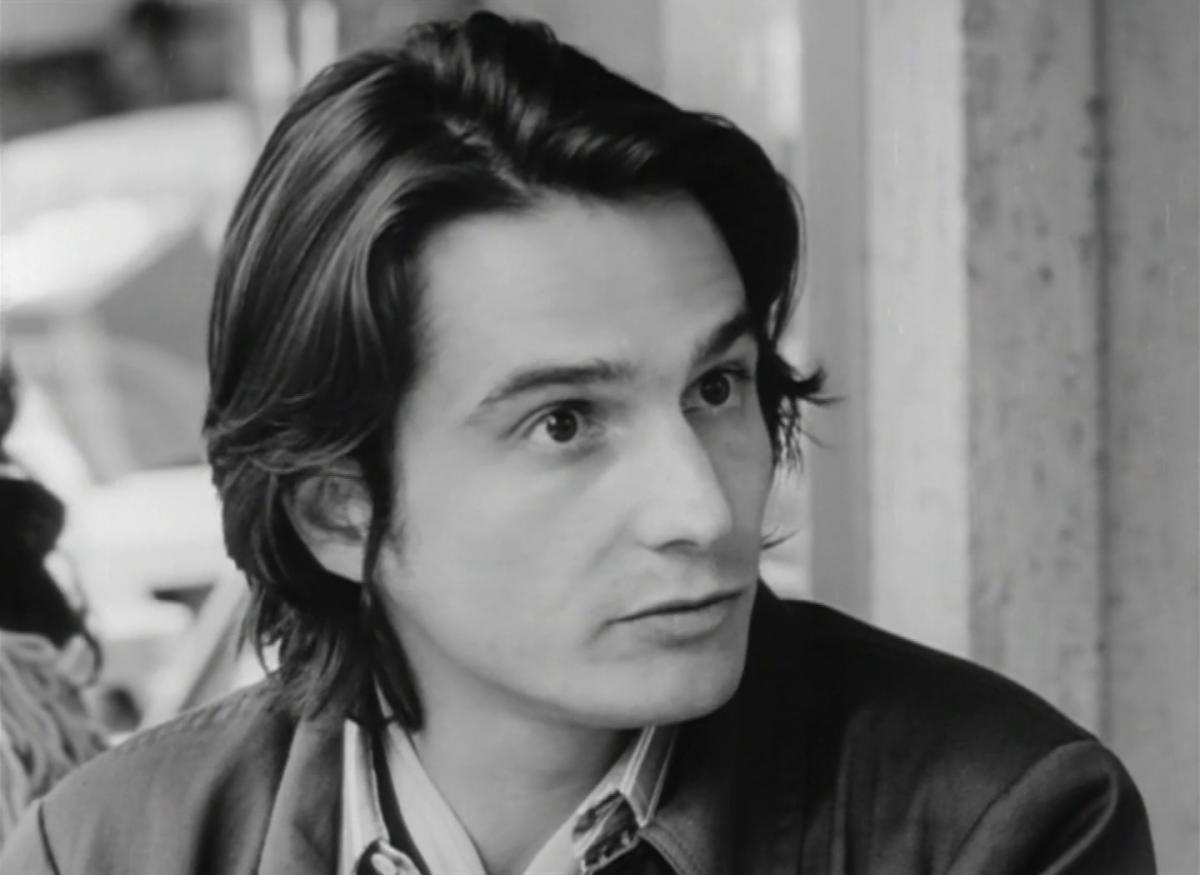
Dernière séquence
“La maman et la putain was loaded…”25 (Eustache) La maman is full of references, to Marcel Proust, Georges Bernanos, Murnau, Bresson, Michel Simon, Sergio Leone, Nicholas Ray, Borges, Poe, Belmondo, Charlie Chaplin, Rose poussière (1972), the novel of Jean-Jacques Schuhl, Jean-Luc Godard, Mozart, Frehel, Piaf, among others, and self-references.
“[Proust] once admitted, voir [seeing] and désirer imiter [wanting to imitate] were one and the same thing to him.”26 (Benjamin) Marcel Proust wrote, of course, his own parodies – mimicry in the guise of a play with styles – which he wrote in the style of Balzac, Flaubert, Sainte-Beuve, Henri de Régnier, the Goncourts, Michelet, Renan, and his favourite Saint-Simon, which are collected in the volume, Pastiches et mélanges.27 The reference to Proust is very explicit. Throughout the film, Alexandre carries a copy of Proust’s À la recherche du temps perdu (1908-1922). Just as Eustache himself was reading Proust while he was writing the film.28 Gilberte shares her name with the love of the narrator of À la recherche, while the story of Gilberte and Alexandre echoes that of La fugitive (or Albertine disparue). The study of the microcosm that serves as recherche to capture something universal is situated in the milieu of Saint-Germain-des-Près, and the two works also share an unusual and excessive length or durée.
In both, we find something consistent with Deleuze’s analysis of Proust et les signes (1964), something that impacts the centre of philosophy and challenges its foundations: truth (or meaning) is not learned through philosophy or conversations with friends; we arrive at truth (and meaning) quite unexpectedly. It is what Alexandre experiences through his meeting with Véronika. Although their affair seems desultory, and Alexandre does everything to ruin it, his love for Véronika arrives in great unlikelihood and jolts him awake, and finally overwhelms and transforms him.
For Deleuze, Proust’s work is based on the apprenticeship to signs, more than on memory. Truth (or meaning) is not willed: it is involuntary, an accidental encounter; it imposes itself to us through signs, which we perceive: through (the pain of) passionate love (les signes amoureux); through (our mysterious impressions of) works of art; and through involuntary memory, which all have the potential to force and do violence to thought. They are what leads to thought, literally thought-provoking.
“The truths of philosophy are lacking in necessity and the mark of necessity. As a matter of fact, the truth is not revealed, it is betrayed; it is not communicated, it is interpreted; it is not willed; it is involuntary. (...) Thought is nothing without something that forces and does violence to it. More important than thought is ‘what leads to thought’; more important than the philosopher is the poet. (...) What forces us to think is the sign. The sign is the object of an encounter, but it is precisely the contingency of the encounter that guarantees the necessity of what it leads us to think. (...) Finally the signs of art force us to think; they mobilize pure thought as a faculty of essences.”29 – Gilles Deleuze
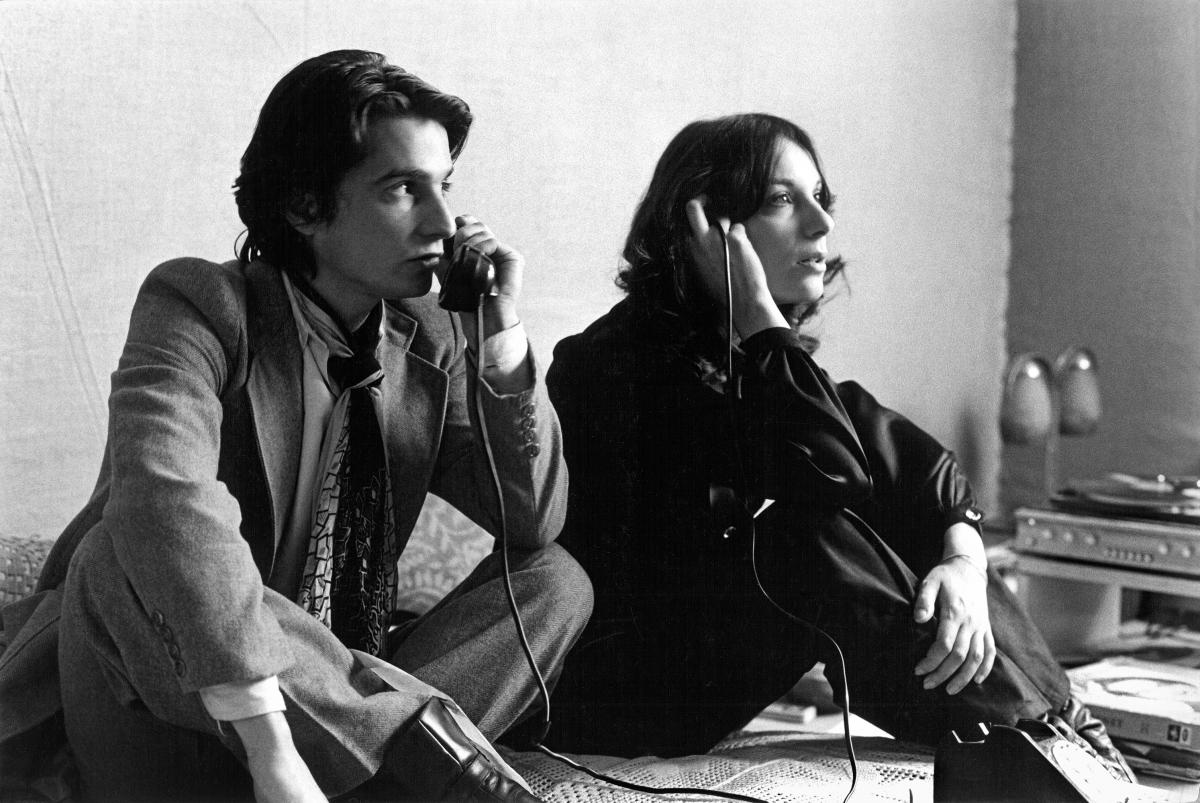
- 1Raffaele Caputo, Rolando Caputo and Clare Stewart, “An Interview with Olivier Assayas,” Screening the Past, October 2014. This interview was conducted by, and first appeared in Metro 113/114 under the title “La femme d’Est”.
- 2See Antoine de Baecque and Angie David, ed., Le dictionnaire Eustache (Paris: Editions Léo Scheer, 2011), 176.
- 3Eustache puts his relative success into perspective in an interview with Cahiers du Cinéma in 1987. “In 1973, there was an article that I didn’t really understand, which connected Le dernier tango, La grande bouffe and La maman et la putain. I found it either a lack of information or bad faith, in the sense that these were two films that had sold 800,000 tickets and one film that had sold 60,000, so calling them ‘three hits’ wasn’t right. I would have liked an explanation, I didn’t feel solidarity with these two films at all.” Jean Eustache in an interview with Serge Toubiana, originally published in Cahiers du Cinema 284 (January 1978). Republished in in Alain Philippon, Jean Eustache (Paris: Cahiers du Cinéma, 1986), 98. Original quote: “En 1973, il y avait eu un article que je n’avais pas vraiment compris, qui associait Le dernier tango, La grande bouffe et La Maman et la Putain. J’avais trouvé qu’il y avait soit un manque d’information, soit une mauvaise foi, dans le sens où il s’agissait de deux films à 800 000 entrées et d’un film de 60 000, et que dire « trois succès », ce n’était pas vrai. J’aurais aimé avoir une explication, je ne me sentais pas du tout solidaire de ces deux films.”
- 4Jean Eustache in an interview with Sylie Blum and Jérôme Prieur, which originally appeared in Caméra/stylo (September 1983). Republished in Philippon, Jean Eustache, 119. Original quote: “La maman et la putain, c’était un film bourré de partis pris, notamment la durée du film.”
- 5‘Comes Love’ is a jazz standard from 1939. It was composed by Sam H. Stept, with lyrics by Lew Brown and Charles Tobias.
- 6Fragments d'un discours amoureux, written by Roland Barthes, appeared in 1977, four years after the film was released. The film and the book both investigate the same discours amoureux, but by different means.
- 7Eustache, who was against rehearsing, knows his own text by heart, as he demonstrates during a television interview (see 05:02:00). Eustache did not allow improvisation. In the film, there is a dialogue, spoken by the friend of Alexandre, which reveals and defines his imperative approach: “THE FRIEND. I’m willing to do what you want me to do. But it must be well prepared. No taking it lightly. So decide whether I should sit, stand, talk or say nothing. No improvising. If you want me to talk, you tell me what I have to say. I say what you want me to say, whatever suits you. I recite. Don’t expect anything else from me.” [“L’AMI. Je veux bien faire ce que tu veux. Mais il faut que ce soit bien préparé. Ne rien faire à la légère. Alors décide si je dois m’asseoir, rester debout, parler, ou ne rien dire. Il n’est pas question d’improviser. Si tu veux que je parle, tu me dis ce que j’ai à dire. Je dis ce que tu veux, ce qui t’arrange. Je récite. N’attends pas de moi autre chose.”] Jean Eustache, La maman et la putain, Scénario (Paris: Cahiers du Cinéma, 1986), 23-24.
- 8Pauline Kael, “The Used Madonna,” The New Yorker, March 4, 1979, 85.
- 9Serge Daney, “The Thread,” originally published in Libération, November 16, 1981. Translated by Steve Erickson.
- 10Op. cit., note 5, Eustache, interview Blum & Prieur, 33. Original quote: “J’ai écrit ce scénario car j’aimais une femme qui m’avait quitté. Je voulais qu’elle joue dans un film que j’avais écrit. (…) J’ai écrit ce film pour elle et Léaud ; s’ils avaient refusé de le jouer, je ne l’aurais pas écrit.”
- 11Op. cit., note 4, Philippon, Jean Eustache, 33. Original quote: “Si le film est admirable, c’est d’abord parce qu’il confirme la théorie généralement admise, mais peu souvent vérifiée, qu’un film a d’autant plus de chances d’atteindre à l’universel (au pluriel) qu’il part du chiffre un (du singulier, littéralement). Le singulier, en l’occurrence, c’est une expérience personnelle, l’histoire d’une déchirure amoureuse qui exigeait impérieusement de devenir un film.”
- 12Diane Arbus, Diane Arbus: An Apeture Monograph (New York: Aperture, 1997), 2.
- 13Garnier takes her own life shortly after the first screening, for actors and collaborators, of a first cut of the film. She leaves a note saying: “The film is sublime, leave it as it is.” Eustache himself stays for a period in a psychiatric hospital. Op. cit., note 3, Le dictionnaire Eustache, 123. Original quote: “Le film est sublime, laissez-le comme il est.”
- 14The music Alexandre listens to also includes Un souvenir by Damia (1941), La belle Hélène, the opera by Jacques Offenbach (1864), and Mozart’s Requiem, which is “the music of Marie and Alexandre”.
- 15“He listens, then she stops singing and says, ‘You’re embarrassing me.’ This wasn’t in the script, it was added during the shoot; the same goes for his way of listening.” Op. cit., note 5, Eustache, interview Blum and Prieur, 116. Original quote: “Il écoute, puis elle s’arrête de chanter en disant : “Vous me gênez.” Ça, ce n’était pas dans le scénario, ça a été ajoute au tournage, et lui sa façon de l’écouter.’”
- 16Op. cit., note 8, Eustache, La maman et la putain, 73. Original quote : “Alors, mes amis, c’est Dipar Apartian qui vous parle et vous dit : au revoir et à bientôt”
- 17“One of the preachers is quite extravagant. He has an undefinable accent, Canadian maybe. I had heard him several times and recorded him on minicassette.” Op. cit., note 5, interview Blum and Prieur, 116. Original quote: “Parmi tous les prédicateurs, il y en a un qui est assez extravagant. Il a un accent indéfinissable, peut-être canadien. Je l’avais entendu plusieurs fois et je l’avais enregistré sur mini-cassette.”
- 18Op. cit., note 8, Eustache, La maman et la putain, 74. Original quote : “En prononçant un mot, c’est la définition de ce mot qu’ils donnent.”
- 19Op. cit., note 8, Eustache, La maman et la putain, 22. Original quote : “Tu connais ça. C’est la chanteuse que les Allemands ont essayé de lancer … pour remplacer Marlène Dietrich après son départ. Et comme toutes les imitatrices, elle est mieux que l’original. Elle ne traîne rien derrière elle.”
- 20Ibid., p. 64. William Wilson, a reference to the short story of Edgar Allan Poe, and most likely to Histoires extraordinaires (1968), a film by Federico Fellini, Roger Vadim and Louis Malle, based on stories by Poe. Alain Delon plays William Wilson, directed by Malle. Original quote: “Oui, je crois beaucoup à ce genre de choses. Tu te souviens de ce type qu’on voyait souvent à Montparnasse. Le sosie de Belmondo, qu’on appelait « le faux Belmondo ». Au début l’effort qu’il faisait pour ressembler au vrai était assez ridicule. Mais avec une insistance maintenue sur plusieurs années, il est arrivé à une telle perfection dans la ressemblance, qu’il est devenu plus vrai que le vrai. Et maintenant, c’est l’autre qui est le faux. (…) Maintenant c’est Belmondo qui est la caricature de son sosie, pas sa caricature, son ombre. Quand on a fait le film sur « William Wilson » c’est avec eux qu’on aurait dû le faire.”
- 21Kurt Vonnegut, Mother Night (London: Vintage Books, 2000), vii.
- 22Ibid., 75. Original quote: “Quelle drôle de façon de faire un lit.” Alexandre: “J’ai vu faire comme ça dans un film. Les films ça sert à ça, à apprendre à vivre, à apprendre à faire un lit.”
- 23Ibid., 81. Original quote : “En fin de compte plus on paraît faux comme ça, et plus on va loin. Le faux, c’est l’au-delà.”
- 24Op. cit., note 3, Le dictionnaire Eustache, 265. Original quote : “J’ai rêvé à ce qu’auraient pu faire les frères Lumière en 1905, en muet, sur cet événement ; j’ai rêvé qu’un autre opérateur aurait filmé la cérémonie de la Rosière pendant la guerre de 14-18, on aurait vu les poilus, le village, et les gens tels qu’ils étaient à l’époque ; j’imaginais le même film en 1936, au moment du Front populaire, quand le maire de Pessac était communiste, je crois, ou en tout cas socialiste ; et puis il y aurait eu la Rosière sous l’Occupation, avec des Allemands regardant passer le défilé.”
- 25Op. cit., note 4, Philippon, Jean Eustache, 119. Original quote : “La maman et la putain, c’était un film bourré…”
- 26Walter Benjamin, ‘The Image of Proust’, in Illuminations, trans. Harry Zorn, ed. Hannah Arendt (London: Pimlico, 1999), 205.
- 27See Marcel Proust, Pastiches et mélanges (Paris: Gallimard), 1992.
- 28Op. cit., note 4, Philippon, Jean Eustache, 178. “Je revois encore Jean Eustache écrivant La maman et la putain alors qu’il découvrait À la recherche du temps perdu : le film se ressent de cette lecture.”
- 29Gilles Deleuze, Proust and Signs, trans. Michael B. Smith (New York, Continuum, 2008), 61, 62 and 63. “Aux vérités de la philosophie, il manque la nécessité, et la griffe de la nécessité. En fait, la vérité ne se livre pas, elle se trahit ; elle ne se communique pas, elle s’interprète ; elle n’est pas voulue, elle est involontaire. (…) La pensée n’est rien sans quelque chose qui force à penser, qui fait violence à la pensée. Plus important que la pensée, il y a ce qui « donne à penser » ; plus important que le philosophe, le poète. (…) Ce qui force à penser, c’est le signe. Le signe est l’objet d’une rencontre ; mais c’est précisément la contingence de la rencontre qui garantit la nécessité de ce qu’elle donne à penser. (…) Enfin les signes de l’art nous forcent à penser : ils mobilisent la pensée pure comme faculté des essences.” Gilles Deleuze, Proust et les signes (Paris : P.U.F., 2011), 116, 117, 118 and 120.
This text is a revised version of Les mots des autres, a chapter from Mekhitar Garabedian's book To a Stranger from a Stranger (ArA-MER, 2015).
A lecture-version of this text was delivered during Universiteit Lichtekooi, on 20 November 2021 at Lichtekooi Artspace (Antwerp), also available on their website.
Images from La maman et la putain (Jean Eustache, 1973)

